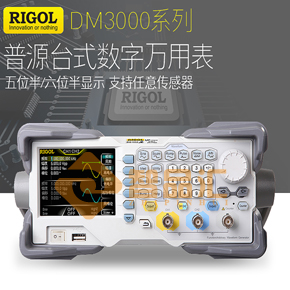Many people don’t know how to use a digital multimeter when they first start using it, so they don’t understand the testing methods. So, how to use a digital multimeter? Let’s take a look at the introduction of Guangzhou Zhipinhui Electronic Technology Co., Ltd.

How to use a digital multimeter?
I. Detailed explanation of how to use a multimeter
(1) Be familiar with the meaning of each symbol on the dial and the main functions of each knob and selector switch.
(2) Perform mechanical zero adjustment.
(3) Select the position and range of the conversion switch according to the type and size of the measured value,
and find the corresponding scale line.
(4) Select the position of the test lead jack.
(5) Measuring voltage: When measuring voltage (or current), you must select the right range.
If you use a small range to measure a large voltage, there is a risk of burning the meter;
if you use a large range to measure a small voltage, the pointer deflection is too small and the reading cannot be read.
The range should be selected so that the pointer deflects to about 2/3 of the full scale.
If the size of the voltage to be measured is not known in advance, you should first select the highest range and
then gradually reduce it to the appropriate range.
a. AC voltage measurement: Set one of the multimeter's switches to the AC/DC voltage block,
and the other switch to the appropriate AC voltage range. Connect the two test leads of the multimeter in parallel
with the circuit or load to be measured. b. DC voltage measurement: Set one of the multimeter's switches to
the AC/DC voltage block, and the other switch to the appropriate DC voltage range.
Connect the "+" test lead (red test lead) to the high potential point, and the "-" test lead (black test lead)
to the low potential point, so that the current flows in from the "+" test lead. If the test leads are connected in reverse,
the meter pointer will deflect in the opposite direction, which can easily bend the pointer.
(6) Current measurement: When measuring DC current, set one of the multimeter's switches to the
DC current block, and the other switch to the appropriate range of 50uA to 500mA. The current range selection
and reading method are the same as those for voltage. The circuit must be disconnected before measurement.
Then, connect the multimeter in series to the circuit being measured in the direction of current
from "+" to "-", that is, the current flows into the red test lead and out of the black test lead. If the multimeter is
mistakenly connected in parallel with the load, the internal resistance of the meter head is very small,
which will cause a short circuit and burn the instrument.
The reading method is as follows: Actual value = indicated value × range / full deviation.
(7) Measuring resistance: When measuring resistance with a multimeter,
the following methods should be used: a. Select the appropriate multiplier.
The scale lines of the multimeter's ohm range are uneven, so the multiplier should be selected so that
the pointer stays in the part with fewer scale lines. The closer the pointer is to the middle of the scale,
the more accurate the reading. In general, the pointer should be pointed
between 1/3 and 2/3 of the scale. b. Ohm zero adjustment. Before measuring resistance, short-circuit the
two test leads and adjust the "Ohm (Electrical) Zero Adjustment Knob" at the same time so that the pointer
just points to the zero position to the right of the ohm scale line. If the pointer cannot be adjusted to zero,
it means that the battery voltage is insufficient or there is a problem inside the meter. And every time you change
the magnification, you need to adjust the ohmmeter to zero again to ensure accurate measurement.
c reading: The reading on the meter head multiplied by the magnification is the resistance value of the resistor being measured.
(8) Measuring transformers: Measuring transformers and measuring inductance have many similarities.
First, let me introduce the transformer. The transformer consists of a primary winding,
a secondary winding and an iron core. There are two types of step-up and step-down transformers.
The primary winding is mainly connected to the power supply.
If you want to measure the primary winding of the TV transformer, just connect the
two test leads of the multimeter to the two ends of the plug, adjust to the ohm range,
and connect it directly to the socket. The resistance should be very small, which means it is good.
The primary winding is connected to the power supply, and the other end is the secondary winding.
The measurement is the same as the primary winding. Connect the test leads to the two terminals of the
secondary winding to measure. The resistance value of the secondary winding will be relatively larger.
Zhipinhui provides professional four-way valve performance testing, lighting testing,
temperature rise testing, stove testing, capacitor durability testing, rain testing,
finger testing - Zhipinhui smart laboratory and other services. If you have more questions
about the equipment, you can consult Guangzhou Zhipinhui Electronic Technology Co., Ltd.